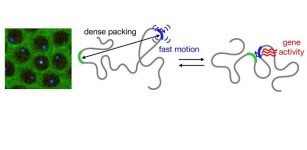Dangerous Methylmercury: How Microbes Create Mercury’s Most Toxic Form
Eddie Gonzales Jr. – MessageToEagle.com – Mercury is highly toxic, becoming especially dangerous as methylmercury, where even a few billionths of a gram can severely harm a developing fetus’s neurological health.
Methylmercury—concentrated in fish and then consumed by people—is a key contributor to mercury poisoning. Now, researchers have revealed new details of how microbes produce methylmercury, potentially informing remediation strategies. Credit: Dwayne Meadows, NOAA/NMFS/OPR
Unfortunately, methylmercury often makes its way into our bodies through seafood—but once it’s in our food and the environment, there’s no easy way to get rid of it.
Now, researchers have identified an unexpected major player in methylmercury poisoning. Their results could help researchers figure out new ways to address methylmercury poisoning.
“Nobody knew how mercury is methylated biologically,” said Riti Sarangi, a senior scientist in SSRL’s Structural Molecular Biologyprogram and co-author on the paper. “We need to understand that fundamental process before we can develop an effective methylmercury remediation strategy. This study is a step toward that.”
At issue in the new paper is a narrow but essential mystery concerning how methylmercury is produced. Scientists knew that most of the mercury we consume starts out as industrial emissions that make their way into bodies of water, where microbes convert it into methylmercury. That form concentrates in fish—and ultimately us—as it moves up the food web.
Still, researchers weren’t sure how microorganisms make methylmercury. A key confounding factor, Sarangi said, is that the protein system that converts mercury to methylmercury, called HgcAB, is present only in very small amounts in microbes, making it extremely difficult to gather and purify enough to study. It’s also extremely finicky: The slightest exposure to oxygen and light deactivates HgcAB.
In an effort spanning 10 years and collaborations across national laboratories and universities, University of Michigan professor Steve Ragsdale, his graduate student Katherine Rush, now an assistant professor at Auburn University, and postdoctoral associate Kaiyuan Zheng developed a new protocol to yield enough stable HgcAB to finally investigate how it transforms mercury into methylmercury.
“We’ve worked with a lot of very difficult proteins, but this one had everything you would not want to have in a protein if you wanted to purify it. It was very complicated,” Ragsdale said.
Once the team purified enough HgcAB, they transported the samples—cooled by liquid nitrogen and shielded from light—to SSRL for X-ray absorption spectroscopy measurements. There, SSRL associate scientist Macon Abernathy used a method called extended X-ray absorption fine structure spectroscopy to study HgcAB.
“SSRL’s X-ray spectroscopy facilities are especially equipped to study biological samples and have powerful detector systems that can resolve the extremely weak signals of ultra dilute protein samples like these,” Sarangi said.
Previous studies hypothesized that the methyl group in question came from methyltetrahydrofolate, a common methyl donor in cellular reactions, the new study finds that it was donated by SAM instead. The researchers said that the results, which narrow in on the main actors in the production of methylmercury, could aid in the development of environmental remediation strategies.
“No one has tried it yet, but perhaps analogs of SAM could be developed that could address methylmercury in the environment,” Ragsdale said.
Written by Eddie Gonzales Jr. – MessageToEagle.com Staff Writer











